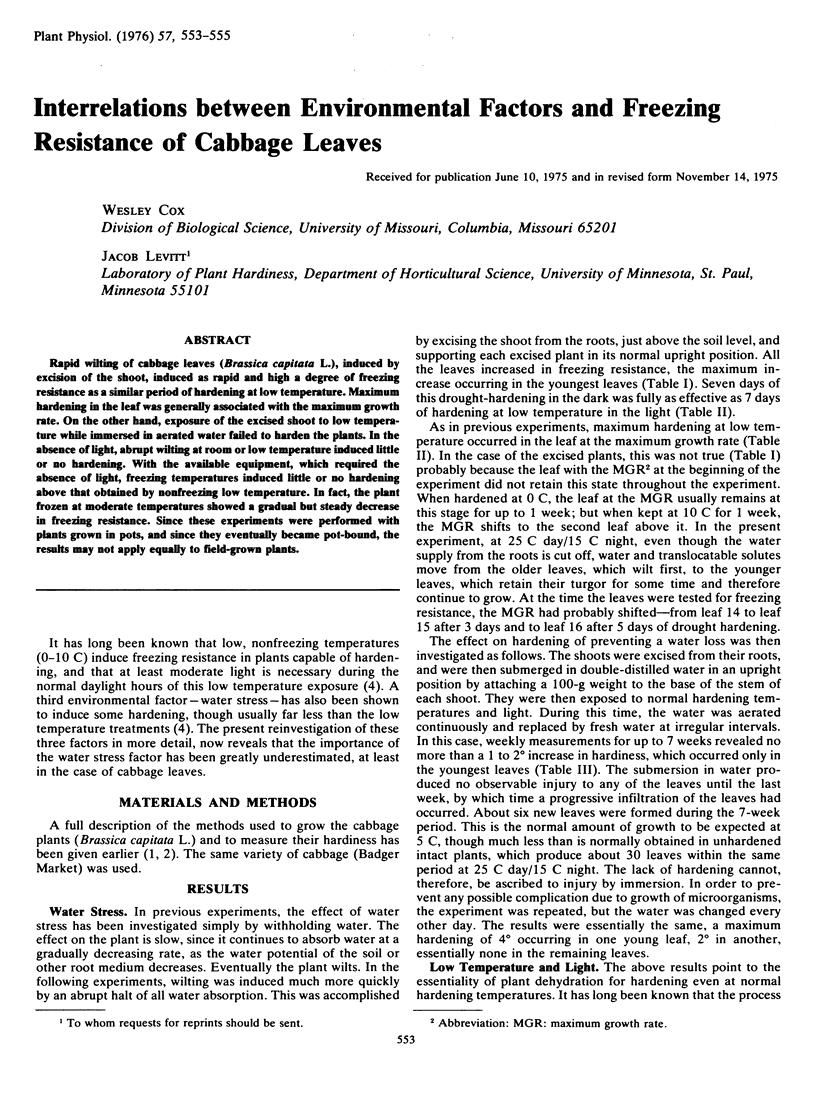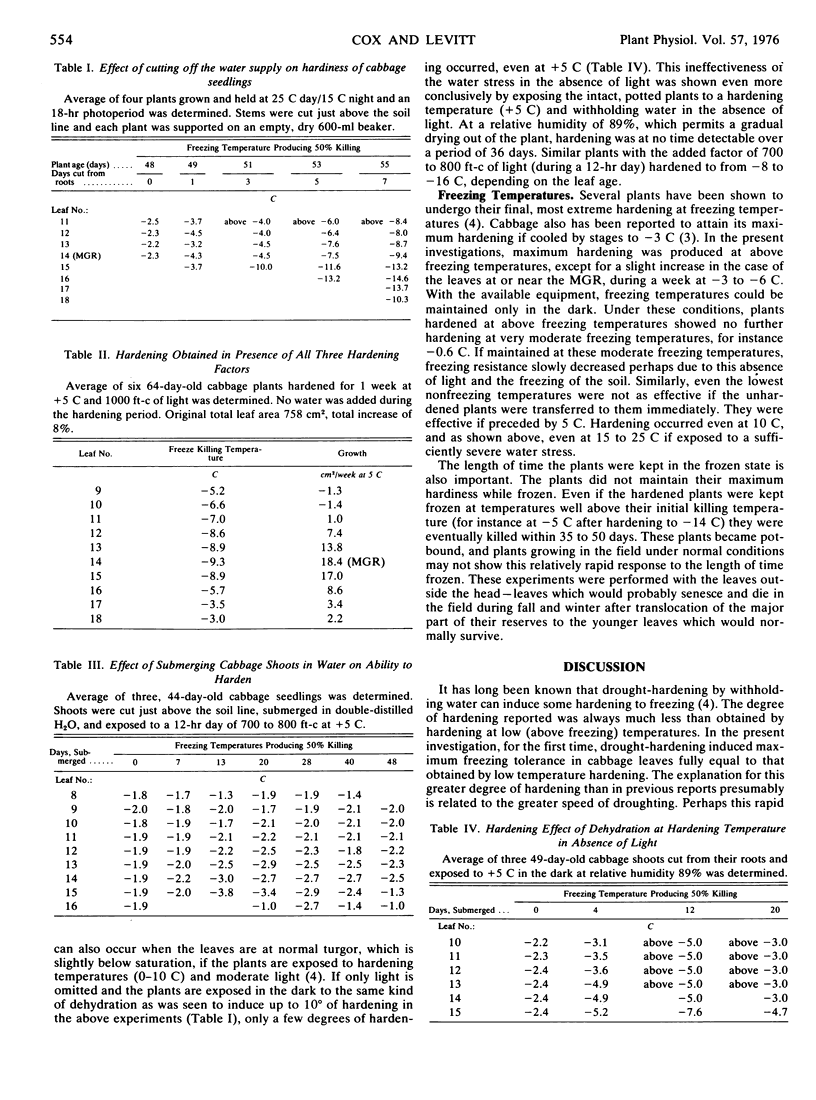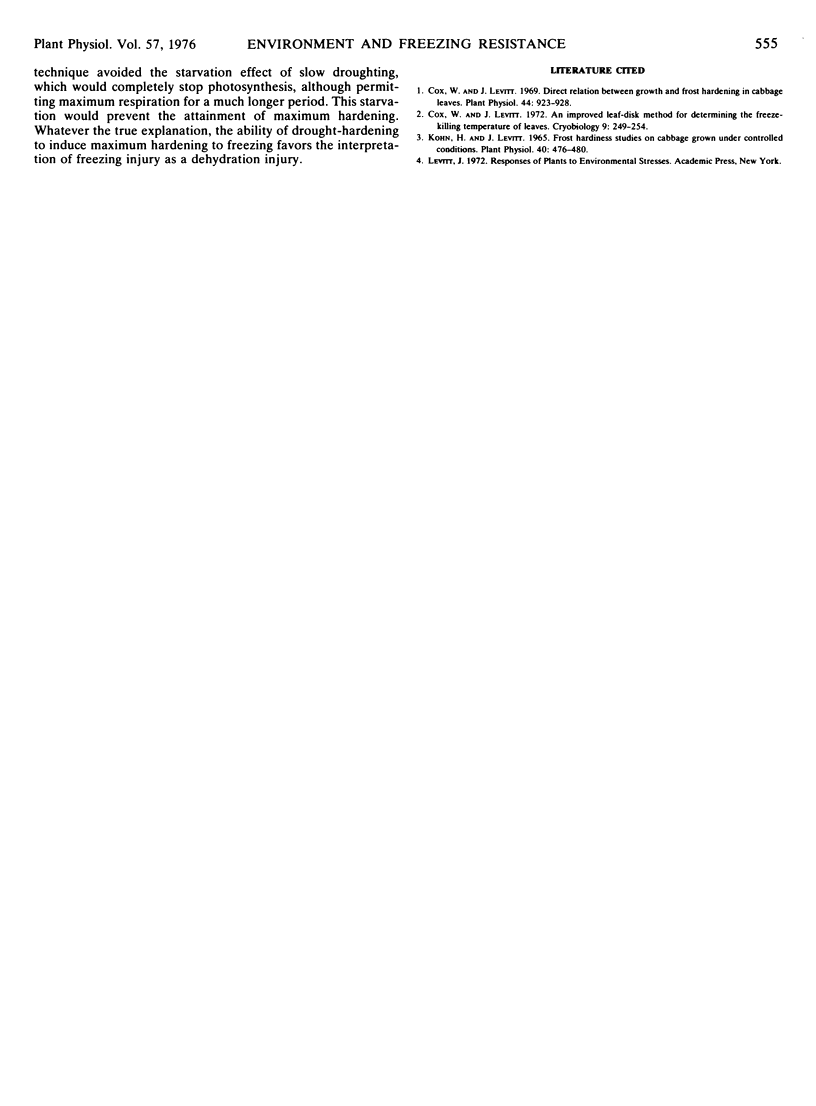Abstract
Rapid wilting of cabbage leaves (Brassica capitata L.), induced by excision of the shoot, induced as rapid and high a degree of freezing resistance as a similar period of hardening at low temperature. Maximum hardening in the leaf was generally associated with the maximum growth rate. On the other hand, exposure of the excised shoot to low temperature while immersed in aerated water failed to harden the plants. In the absence of light, abrupt wilting at room or low temperature induced little or no hardening. With the available equipment, which required the absence of light, freezing temperatures induced little or no hardening above that obtained by nonfreezing low temperature. In fact, the plant frozen at moderate temperatures showed a gradual but steady decrease in freezing resistance. Since these experiments were performed with plants grown in pots, and since they eventually became pot-bound, the results may not apply equally to field-grown plants.
Full text
PDF


Selected References
These references are in PubMed. This may not be the complete list of references from this article.
- Cox W., Levitt J. Direct relation between growth and frost hardening in cabbage leaves. Plant Physiol. 1969 Jun;44(6):923–928. doi: 10.1104/pp.44.6.923. [DOI] [PMC free article] [PubMed] [Google Scholar]
- Kohn H., Levitt J. Frost Hardiness Studies on Cabbage Grown under Controlled Conditions. Plant Physiol. 1965 May;40(3):476–480. doi: 10.1104/pp.40.3.476. [DOI] [PMC free article] [PubMed] [Google Scholar]


